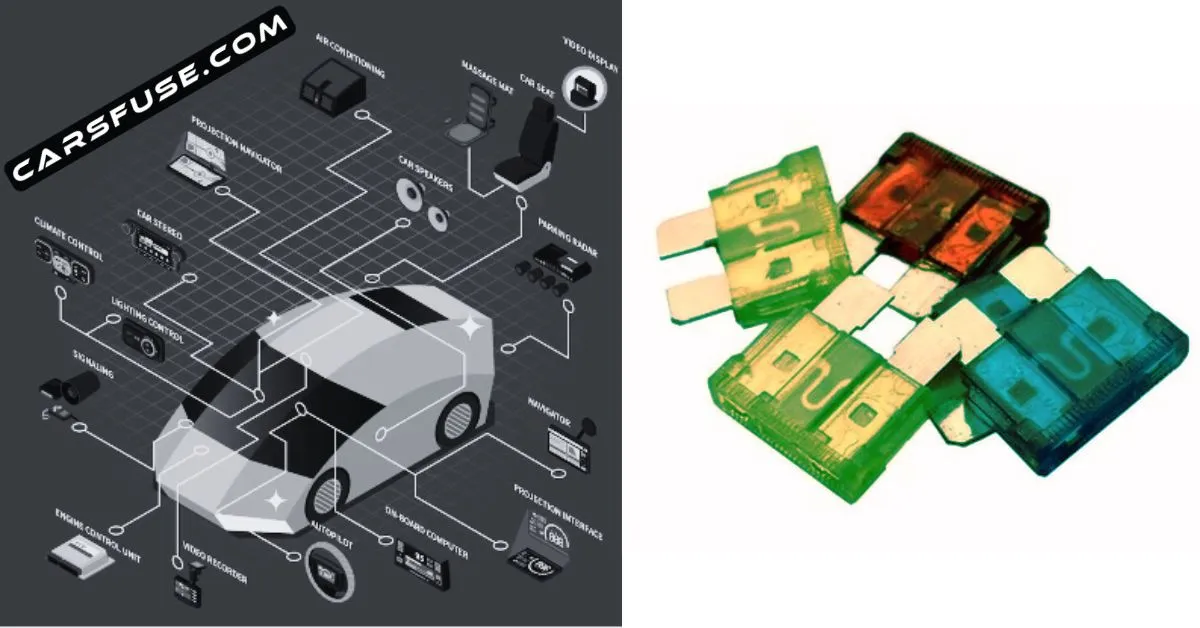This article aims to explore the multitude of factors that contribute to the deterioration of car fuses. By gaining an understanding of these underlying causes, individuals who own or have an interest in cars can proactively implement measures to prevent fuse failures and guarantee the seamless functioning of their vehicles.
Table of Contents
Car fuses are small electrical devices designed to protect the car’s electrical system from damage caused by electrical overloads and short circuits. They are placed in the car’s fuse box and act as a safety mechanism. Fuses play a critical role in safeguarding a car’s electrical components, preventing excessive current from flowing through the system and damaging the components or causing a fire hazard.
Common Causes of Car Fuses Going Bad
1. Electrical Overload
Electrical overload manifests when the demands of an electrical system exceed the safe limits that a fuse is specifically designed to accommodate. This phenomenon occurs when a surge of current, surpassing the fuse’s capacity, flows through the circuit. Another contributing factor to electrical overload is the hasty integration of aftermarket electronic devices without due consideration for their power requirements. These added devices can disrupt the delicate balance within the electrical system, potentially leading to fuse failures and the overall functionality of the vehicle’s electrical system.
However, it is worth noting that repeated overloads can gradually deteriorate the internal components of the fuse, rendering it more susceptible to failure in the future. The prolonged exposure to excessive current weakens the fuse’s structure and compromises its ability to effectively protect the electrical system. Taking proactive measures to prevent overloads and addressing any underlying issues can mitigate the risk of repeated fuse failures and enhance the overall performance and safety of the electrical system in the vehicle.
2. Short Circuits
A short circuit is an electrical anomaly where the flow of current deviates from its intended path and instead travels through an unintended route of minimal resistance. Additionally, sparking or the emission of smoke may occur at the site of the short circuit, indicating the intense heat generated by the electrical arcing. Furthermore, the electrical system may exhibit malfunctions or irregularities, such as flickering lights, non-functional switches, or intermittent power loss.
Similarly, loose connections can generate intermittent or unstable electrical pathways, facilitating the diversion of current and triggering a short circuit. Blown fuses are a common sign, as the excessive current overload prompts the fuse to blow in order to safeguard the system. Identifying and rectifying these underlying issues is crucial to preventing short circuits, safeguarding the electrical system, and ensuring the safe and efficient operation of the vehicle.
3. Age
As time passes, the condition of fuses can gradually decline due to various factors in their environment. Environmental factors, such as exposure to moisture, dust, and contaminants, can contribute to the deterioration of fuses. Vibration, a common occurrence in vehicles, can also impact the fuse’s reliability over time. Within the fuse itself, the metal elements are particularly susceptible to weakening as a result of these environmental stresses. As the metal elements deteriorate, their ability to conduct electricity efficiently diminishes, resulting in an increase in electrical resistance.
Discoloration, corrosion, or a loose connection between the metal contacts and the fuse holder are common indicators of a fuse nearing the end of its lifespan. By being proactive in monitoring the condition of fuses and promptly replacing deteriorated ones, car owners can mitigate the risks associated with fuse failures and maintain a robust and dependable electrical system.
4. Faulty Electrical Components
Defective electrical components, such as motors, switches, or relays, have the potential to draw excessive current or cause irregular voltage fluctuations. This places strain on the fuses responsible for protecting the electrical system, leading to premature failure. Faulty components can result in repeated fuse blowing or abnormal voltage spikes, compromising the reliability of the fuse. Promptly addressing and replacing defective components is essential to maintain the longevity and effectiveness of fuses.
Are you keen on expanding your knowledge about fixing car electrical issues? Our compilation of articles is packed with straightforward explanations and valuable advice on car fuses. We comprehend that dealing with fuse failures can be a frequent hurdle, and we're here to help you identify the common causes behind these issues. By clicking the link below, you'll gain valuable knowledge and boost your confidence when it comes to handling fuse-related challenges. The link provides effective solutions that can assist you in resolving these problems efficiently. Can I replace a car fuse by myself? How many fuse boxes does a car have? Can you drive your car with a blown fuse? What is the fastest way to check a car fuse? How do I know if my car fuse box is bad or broken? Do you need to disconnect battery to change fuse? How do you check car fuses without removing them?
Conclusion on ‘What causes car fuses to go bad?’
Car fuses can go bad due to electrical overload, short circuits, aging, and faulty electrical components. Understanding these causes is crucial for maintaining a reliable electrical system in a car. Ignoring fuse failures can lead to more significant problems and potential hazards.
Regularly inspect and replace fuses as well as maintain the electrical components. Follow proper installation procedures when replacing fuses for electrical system upgrades or modifications to ensure compatibility and safety.

